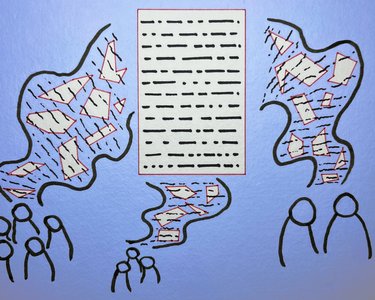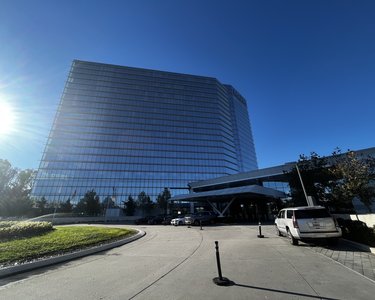
Our Senior Research & Learning Manager, Alex, shares his reflections from this year’s NetHope Global Summit, highlighting his key takeaways, from the potential of AI to the critical importance of data governance. Alex dives into the discussions, innovations, and challenges that stood out, and explores how these insights can help shape the future of humanitarian work.
Key Takeaways:
- Food Security is a key area in which technologies can have a substantial impact on the sustainability of humanitarian and development programming. Further donor support to integrate these approaches into wider food security solutions would encourage its continued uptake and further development.
- AI solutions present significant opportunities to improve the accuracy and relevance of humanitarian programming to the communities we serve. However, much work remains to be done to unpick and find solutions to the ethical and operational challenges it poses.
- Organisations must dedicate resources to ensure that we remain up to date with a constantly shifting regulatory landscape. The importance of carefully considered inter-organisational process throughout the AI adoption journey is critical to AI’s continued integration into humanitarian programming.
- A greater representation of field level staff and participants from LMICs would make the summit more representative and more impactful on humanitarian programming.
I attended this year’s NetHope Global Summit, held last week in Washington, D.C., which gathered a diverse coalition of humanitarians, donors, and leaders from the technology and innovation sectors for an impactful week of discussions, workshops, and seminars. The event focused on the intersection of technology, governance, and humanitarian action, emphasising the critical role that digital advancements play in addressing global challenges. The significance of this summit lies not only in the variety of stakeholders it brings together but also in its commitment to addressing urgent humanitarian challenges through innovative solutions.
This blog covers my key takeaways from the summit.
Keynote speakers included Justin Spelhaug, Microsoft’s Corporate Vice President of Technology for Social Impact, and Abby Maxman, Oxfam America’s President and CEO. Their participation underpinned a vital message: the future of humanitarian action is inextricably linked to digital and technological innovation.
As the summit progressed, I explored new technological innovations while also raising essential questions about how humanitarian organisations can effectively engage with emerging technologies in a way that both enhances their work and mitigates the associated risks. Erin Connor, Director of Cisco Crisis Response summed up the week's discussions, telling us “not all digital progress is human progress.” This sentiment guided conversations about how the humanitarian sector can leverage the positive benefits of AI and digital technologies while minimising potential harm.
Sustainable technology
A theme that I found particularly interesting was sustainable technology and its crucial role in addressing urgent humanitarian issues, such as food insecurity. CGIAR, a global partnership comprising various organisations dedicated to food security, showcased its efforts in harnessing technological innovations to meet climate goals by 2050.
Central to CGIAR's strategy is its commitment to digital transformation, using data from farmers and other sources to propel sustainability-focused technological advancements. While NDVI and other tools have long been used to monitor cropland, I was particularly interested by novel AI approaches that can detect crop pests and diseases from photographs submitted by farmers, enabling rapid diagnostics for over 35 million users globally. Additionally, technologies like CGIAR’s Artemis system assist crop breeders in creating climate-resilient varieties, while supply chain tools are designed to identify potential risks and bottlenecks.
For me, CGIAR highlighted the significant impact these technologies can have, empowering communities to confront food insecurity and climate-related threats. CGIAR’s innovative initiatives exemplify how tech-driven solutions can support global communities, building resilience against crises that threaten social, political, and economic stability.
The role of AI in the humanitarian sector
I found conversations surrounding Artificial Intelligence (AI) particularly engaging, focusing on the vast opportunities it presents, as well as the challenges it introduces. AI has the potential to improve operational efficiency throughout the humanitarian sector, from using AI to enhance bureaucratic efficiencies, to identifying and delivering information to refugees and monitoring contexts and humanitarian needs.
Leah Perry from Box and Madeleine "Em" Fackler from the International Rescue Committee (IRC) discussed how humanitarian agencies are already employing AI for early warning systems, crisis preparedness, and sentiment analysis of media and social media platforms, allowing for more proactive, data-driven humanitarian responses. The IRC is pioneering AI interfaces with beneficiaries, effectively deploying AI chatbots to deliver essential information to refugees in Greece and Jordan, illustrating the power of AI in enhancing access to critical services. This range of applications underscore AI’s potential to provide deeper insights into the root causes of need, enabling organisations to respond to crises with greater speed and precision.
Challenges ahead
Despite the promising steps towards integrating AI into humanitarian programming, the summit also highlighted the growing importance of data management and privacy. As digital platforms increasingly facilitate aid distribution, registration, and needs assessments, safeguarding sensitive information has become imperative. Summit speakers emphasised the necessity for robust security measures and ethical data practices, particularly in resource-limited or conflict-affected areas where maintaining data privacy can be particularly challenging.
Another critical issue raised was the risk of data bias, which can lead to discriminatory practices, especially in conflict zones where data quality is often subpar. Such biases not only reinforce existing inequalities but also jeopardise the credibility of humanitarian organisations, making them susceptible to misinformation and distrust from the communities they aim to assist. Attendees also acknowledged the need for users to be aware when their data is being processed or when they are interacting with AI systems. Concerns were also voiced about “surveillance humanitarianism,” where the application of AI solutions could potentially overshadow genuine community engagement, thereby increasing vulnerabilities rather than alleviating them.
Despite these challenges, IOM’s Chief Information Officer, Mike Begembe, remarked, “this pessimism around AI is limiting our ability to use it effectively.” The need for transparent communication regarding AI use, data sources, and the responsible application of that data was further stressed by Shadrock Roberts, Director of Data Protection and Privacy at Mercy Corps.
To prepare the humanitarian sector for deeper AI integration in both programmes and management, I think it is critical that we learn from each other and share experiences and challenges in implementing AI within our organizations. To support this, a key recommendation put forward was to develop AI Observatories and training hubs. These resources would provide guidance, regulatory insights, and crucial case studies that demonstrate both successes and failures. By building a knowledge base with best practices and open documentation, organisations can remain agile amid rapid changes in AI and data security.
A new era of AI
It is evident that while the challenges facing the humanitarian sector are significant, so too are the opportunities that lie ahead. In a world that is rapidly changing and often increasingly challenging, it is crucial for humanitarian organisations to adopt advanced technologies in ways that are sustainable, ethical, and adaptable to evolving governance requirements.
What remained clear to me throughout was that as AI continues to transform the sector, human involvement remains indispensable to ensure that the benefits are realised while risks are mitigated. Although off-the-shelf AI tools like chatbots can aid, making them truly transformative requires substantial resources. As Shadrock Roberts pointed out, “Buying and integrating an off-the-shelf chatbot that can point you to basic info is easy. What’s hard is tailoring that tool to our specific needs and ensuring we have the human resources to make our chatbot as effective as it can be.”
A key question that needs to be considered more broadly is ‘is technology, especially AI, the most useful and pragmatic way of solving the problems faced by the sector?’ Technology is not, and should not be, a one size fits all solution, but one that assists human made decisions and processes rather than replacing them. The need for human input as we continue to develop our inevitable integration of these tools is imperative if they are going to be the transformation many at NetHope deemed them to be.
AI companies have a unique opportunity to make their tools and services more accessible to humanitarians. In addition to offering discounts, they could consider providing specialised dedicated support to organisations working in LMICs and communities affected by crisis. Recognising that funds spent on AI tools directly impact humanitarian programme budgets, tech companies should explore ways to further reduce often inhibitive costs, offer greater subsidies, and adapt pricing to support localisation and other humanitarian approaches. Listening closely to humanitarian needs and involving humanitarians and the communities we serve in the technology development process from initial design through to implementation could foster problem focused, user centric solutions. This would create tools that genuinely meet the needs of communities and humanitarian organisations, potentially avoiding the challenges associated with top-down models. Furthermore, as humanitarians we should question whether deploying tools developed by organisations that collaborate with armed forces negates our responsibilities to affected populations and ability to adhere to the humanitarian principles of humanity, impartiality, and do no harm.
This new era of AI holds transformative potential for enhancing humanitarian responses, introducing innovative approaches to tackle global crises more effectively in partnership with the tech community. As an essential forum for these discussions, NetHope is shaping the future of humanitarian work in an ever-evolving world. AI Solutions for Humanitarian Challenges’, that we recently launched together with Elrha’s Humanitarian Innovation Fund (HIF), is responding to the need for coordinated action. This collaborative project aims to map the emerging humanitarian AI landscape and take a problem-centred approach to AI development, empowering humanitarian practitioners to add their voices and influence to the future of AI in this field.
As a final reflection, I feel it would be valuable to see more representation next year from field-level operations and actors from LMICs. This would provide insight into how AI and other technologies are transforming responses on the ground and shed light on the unique challenges faced by humanitarian’s in LMICs when trying to engage with and integrate novel technological solutions.
We look forward to reconvening next year in Amsterdam for the 25th (or is it the 30th?!) NetHope Summit, where we can continue these critical discussions and drive meaningful change.

You might also be interested in…

